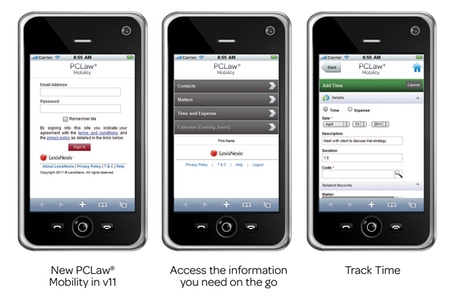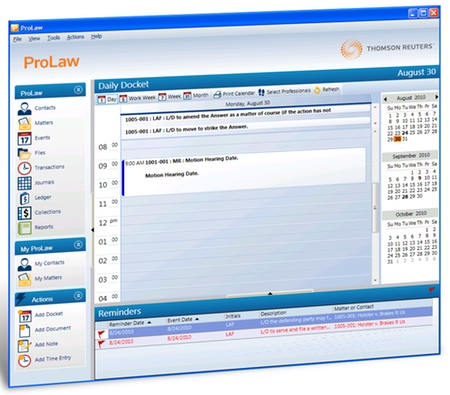Originally published on May 17, 2011 in our free BigLaw newsletter. Instead of reading BigLaw here after the fact, sign up now to receive future issues in realtime.

While Exterro's April Fool's spoof on robots replacing lawyers by "eliminating up to 99.9 percent of all inefficient cerebral functions currently performed by highly paid attorneys, paralegals and technologists" proved humorous, those of you who work in litigation may have found it hit too close to home.
The buzz surrounding Predictive Coding has steadily increased. This eDiscovery technology, which essentially uses machine learning to automate part of the review process, is causing a lot of head-scratching in large law firms. I remember pitching an article to a legal technology editor ten years ago themed "auto-coding is here." The first question that came back to me was, "Is it really here?" I feel like many of you are about to ask same question about predictive coding.
My former colleague John Corey who is now Regional Manager at Recommind told me about how large law firms are responding to their predictive coding product.
"We are seeing the early law firm adopters put predictive coding through its paces and validate the time and expense savings," said Corey. "They also found, sometimes to their surprise, more accurate results. Once litigation departments realize that predictive coding optimizes rather than completely replaces human review, any concerns about defensibility evaporate. We're now seeing a broader adoption as firms realize that they'd rather benefit from predictive coding than compete with it."
Corey also told me that after working directly with large firm lawyers for many years, he has a very strong hunch that the early adopters most likely ran data through the traditional review process as well as the predictive coding process. Once they realized that predictive coding could be trusted, they converted 100 percent.
If you missed the link last year in BlawgWorld, Monica Bay interviewed two eDiscovery experts about predictive coding on her October 2010 Law Technology Now podcast entitled Crash or Soar? Predictive Coding.
A Court Docketing David Challenges the Goliaths
While the "big boys" are battling it out in eDiscovery, let's not forget about the small and nimble players in the legal technology industry. I've noticed a recent trend in which the "little guys" are landing the big deals. Why? Are law firms finally realizing they can get a better product, better customer service, and a better price by going with a less known company? Maybe so.
It seems to be true for American LegalNet (disclosure — a client of Edge Legal Marketing). The company has landed some noticeably big deals for its eDockets rules-based docketing and calendar system from McKenna Long & Aldridge, Baker & Daniels, and Fenwick & West — and these are just the firms willing to talk. Why have firms such as these spurned giants such as CompuLaw and Elite Calendar Manager for American LegalNet?
I caught up with Connie Moser, senior marketing director of American LegalNet (she previously worked at Elite), to get her perspective. "Having a cost-effective product in place to help with critical date management is essential for law firms that want to enhance workflow and minimize malpractice risk," she told me.
ALM Media Switches Teams
ALM Media, the parent company of American Lawyer, National Law Journal, and many other legal publications, announced last month that it has "reunited" with LexisNexis. ALM Media will shift its exclusive legal news content licensing from Westlaw to rival Lexis.com. ALM Media CEO Bill Pollak has the best take on the deal — not surprising since he's the ultimate insider. "West has been a solid partner for the past five years and this decision was not one that was made lightly," writes Bill.
Where will Thomson Reuters' West obtain its legal news for Westlaw going forward? Publisher Neil Squillante got the scoop and reported that Reuters and West have teamed up to deliver their own legal news and analysis.
In the Meantime, Plug in Your BioPorts
With corporate clients pressuring law firms to cut costs, the only path for doing so increasingly lies in technology. Exterro's "easy-to-install and hard to remove BioPorts (certified to be 85 percent pain-free)" might sound silly, but don't laugh too hard. Yesterday's technology pipe dream sometimes becomes tomorrow's reality (smartphones anyone?). As Michael Lewis once wrote, the future just happened.
Written by Amy Juers of Edge Legal Marketing.
How to Receive BigLaw
Many large firms have good reputations for their work and bad reputations as places to work. Why? Answering this question requires digging up some dirt, but we do with the best of intentions. Published first via email newsletter and later here on our blog, BigLaw analyzes the business practices, marketing strategies, and technologies used by the country's biggest law firms in an effort to unearth best and worst practices. The BigLaw newsletter is free so don't miss the next issue. Please subscribe now.












